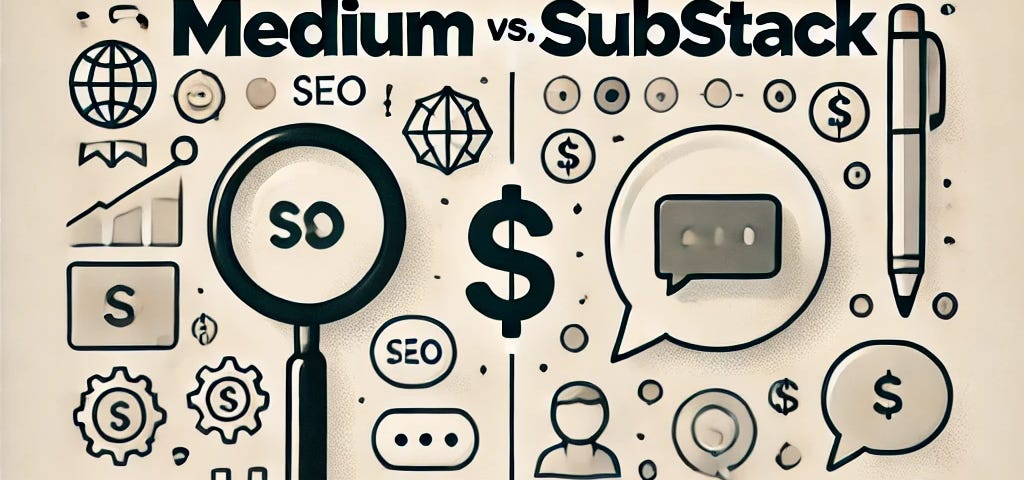Medium vs Substack: Which Platform Is Best for Writers?

For Australian writers looking to share their thoughts, stories, and expertise with the world, choosing the right platform is crucial. Medium and Substack are two of the biggest players in the online writing space, each offering unique benefits and challenges. Whether you’re a blogger, journalist, or storyteller, deciding where to publish can significantly impact your reach and earnings. Let’s break down the key differences to help you choose the right one for your needs.
What Is Medium?
Medium is a well-established online publishing platform that allows writers to publish articles and reach a built-in audience. It has a sleek, minimalist interface and a focus on high-quality content. Medium operates on a membership model, meaning readers pay a subscription fee to access content, and writers earn based on reader engagement through the Medium Partner Program.
Pros of Medium:
- Built-in audience: Medium has a large community of readers who actively engage with content.
- Ease of use: The platform is user-friendly, with a distraction-free writing experience.
- Monetization via engagement: Writers earn money based on the number of members who read their work, making it a good option for high-engagement content.
- SEO benefits: Medium articles can rank well on Google, helping increase visibility.
- Curation system: If Medium curates your content, it gets extra exposure across the platform.
Cons of Medium:
- Revenue model is unpredictable: Earnings are based on Medium’s algorithm, which can change frequently.
- You don’t own your audience: Unlike an email list, you can’t directly contact your readers.
- Limited customisation: Writers have little control over branding and design.
- Content discovery can be competitive: It’s not always easy to stand out with so many writers on the platform.
What Is Substack?
Substack is a newsletter-based platform that allows writers to build a direct relationship with their readers via email. Unlike Medium, Substack operates on a subscription model where writers can charge readers directly for access to their newsletters. It gives writers complete ownership over their audience, making it a powerful tool for those looking to build a loyal following.
Pros of Substack:
- Full control over your audience: You own your email list and can directly engage with subscribers.
- Flexible monetization: Writers can offer free and paid subscriptions, with more control over pricing.
- Community building: Substack fosters deeper connections with readers through direct email communication.
- No algorithm dependence: Your reach isn’t affected by changing algorithms like on Medium.
- Branding and design freedom: You can customize your newsletter and brand it the way you want.
Cons of Substack:
- No built-in audience: Unlike Medium, you have to build your readership from scratch.
- Email fatigue: Not all readers want to subscribe to yet another newsletter.
- Less SEO visibility: Content is locked behind email rather than publicly discoverable on search engines.
- Monetization requires effort: You need a solid strategy to attract paying subscribers.
Which Platform Is Right for You?
Choose Medium if:
- You prefer a built-in audience and don’t want to handle marketing.
- You want to earn money through reader engagement rather than subscriptions.
- You like the idea of writing occasional articles rather than managing an ongoing newsletter.
- You want to benefit from Medium’s SEO and content curation.
Choose Substack if:
- You want full control over your audience and direct access to your readers.
- You prefer a subscription-based income model where readers pay directly.
- You’re willing to put in the effort to market and grow your email list.
- You want to build a long-term, dedicated community of readers.
The Verdict
Both Medium and Substack offer excellent opportunities for writers, but the right choice depends on your goals. If you want an easy way to reach an existing audience and earn through engagement, Medium is a great option. However, if you’re looking for more independence and long-term income potential, Substack allows you to cultivate your own subscriber base and revenue stream.
For Australian content writers, it may also depend on your niche. If you write general-interest articles, Medium’s reach can be advantageous. If you’re covering niche topics or industry-specific content, Substack’s dedicated audience model might work better.
Ultimately, some writers choose to use both—leveraging Medium for discoverability and Substack for deeper engagement. Whatever path you choose, the most important thing is to keep writing and sharing your voice with the world.

